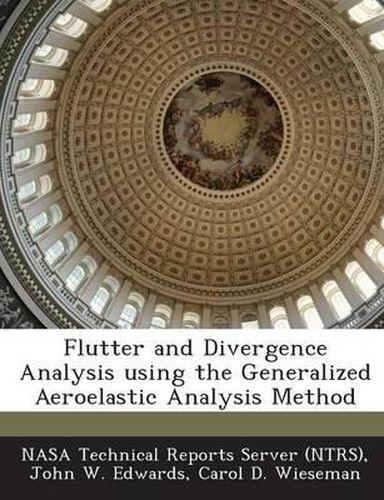Readings Newsletter
Become a Readings Member to make your shopping experience even easier.
Sign in or sign up for free!
You’re not far away from qualifying for FREE standard shipping within Australia
You’ve qualified for FREE standard shipping within Australia
The cart is loading…






The Generalized Aeroelastic Analysis Method (GAAM) is applied to the analysis of three well-studied checkcases: restrained and unrestrained airfoil models, and a wing model. An eigenvalue iteration procedure is used for converging upon roots of the complex stability matrix. For the airfoil models, exact root loci are given which clearly illustrate the nature of the flutter and divergence instabilities. The singularities involved are enumerated, including an additional pole at the origin for the unrestrained airfoil case and the emergence of an additional pole on the positive real axis at the divergence speed for the restrained airfoil case. Inconsistencies and differences among published aeroelastic root loci and the new, exact results are discussed and resolved. The generalization of a Doublet Lattice Method computer code is described and the code is applied to the calculation of root loci for the wing model for incompressible and for subsonic flow conditions. The error introduced in the reduction of the singular integral equation underlying the unsteady lifting surface theory to a linear algebraic equation is discussed. Acknowledging this inherent error, the solutions of the algebraic equation by GAAM are termed ‘exact.’ The singularities of the problem are discussed and exponential series approximations used in the evaluation of the kernel function shown to introduce a dense collection of poles and zeroes on the negative real axis. Again, inconsistencies and differences among published aeroelastic root loci and the new ‘exact’ results are discussed and resolved. In all cases, aeroelastic flutter and divergence speeds and frequencies are in good agreement with published results. The GAAM solution procedure allows complete control over Mach number, velocity, density, and complex frequency.
$9.00 standard shipping within Australia
FREE standard shipping within Australia for orders over $100.00
Express & International shipping calculated at checkout
The Generalized Aeroelastic Analysis Method (GAAM) is applied to the analysis of three well-studied checkcases: restrained and unrestrained airfoil models, and a wing model. An eigenvalue iteration procedure is used for converging upon roots of the complex stability matrix. For the airfoil models, exact root loci are given which clearly illustrate the nature of the flutter and divergence instabilities. The singularities involved are enumerated, including an additional pole at the origin for the unrestrained airfoil case and the emergence of an additional pole on the positive real axis at the divergence speed for the restrained airfoil case. Inconsistencies and differences among published aeroelastic root loci and the new, exact results are discussed and resolved. The generalization of a Doublet Lattice Method computer code is described and the code is applied to the calculation of root loci for the wing model for incompressible and for subsonic flow conditions. The error introduced in the reduction of the singular integral equation underlying the unsteady lifting surface theory to a linear algebraic equation is discussed. Acknowledging this inherent error, the solutions of the algebraic equation by GAAM are termed ‘exact.’ The singularities of the problem are discussed and exponential series approximations used in the evaluation of the kernel function shown to introduce a dense collection of poles and zeroes on the negative real axis. Again, inconsistencies and differences among published aeroelastic root loci and the new ‘exact’ results are discussed and resolved. In all cases, aeroelastic flutter and divergence speeds and frequencies are in good agreement with published results. The GAAM solution procedure allows complete control over Mach number, velocity, density, and complex frequency.